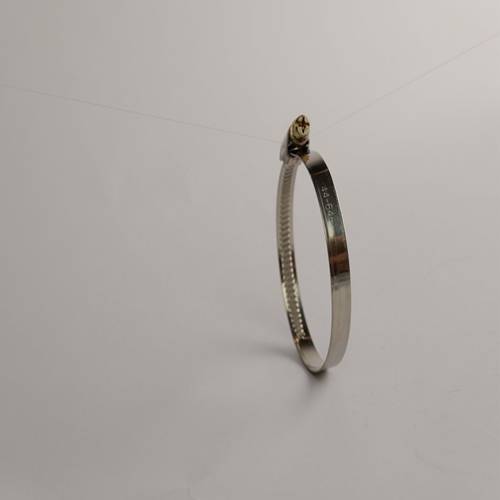- Phone:+86-17331948172 +86-0319-8862898
- E-mail: inquiry@puxingclamp.com
Abe . 05, 2024 14:43 Back to list
hose clamps on fuel line factories
Hose Clamps on Fuel Line Factories Importance, Types, and Best Practices
Hose clamps are an integral component in the assembly of fuel lines within various manufacturing and automotive sectors. These seemingly small but crucial devices are designed to secure hoses and tubing to fittings, preventing leaks and ensuring efficient fluid transfer. In fuel line factories, the significance of hose clamps cannot be overstated. They play a pivotal role in safety, reliability, and operational efficiency.
The Importance of Hose Clamps in Fuel Line Production
In industries where fluids need to be contained with precision, hose clamps provide a reliable solution to secure hoses to various fittings and components. In fuel line production, these clamps are essential for maintaining the integrity of fuel systems, which operate under high pressure and varying temperatures. A failure in the hose clamp can lead to catastrophic leaks or spills, potentially resulting in safety hazards, environmental damage, and financial loss.
The risks associated with malfunctioning hose clamps emphasize the need for quality control and adherence to best practices in the manufacturing process. By ensuring that the correct type of clamp is used, factories can minimize the risk of failure and enhance overall system performance.
Types of Hose Clamps
There are several types of hose clamps used in fuel line applications, each with its own advantages and disadvantages. Understanding these types can help factories choose the most suitable clamps for their specific needs.
1. Screw Hose Clamps The most common type, screw hose clamps offer adjustability and secure fastening. They work by tightening a metal band around the hose, which is effective for most standard applications.
2. Spring Hose Clamps These clamps are designed to provide constant pressure on the hose as it expands and contracts with temperature changes. Their self-adjusting nature makes them ideal for environments with fluctuating temperatures.
3. Ear Clamps These provide a tight seal by creating a fixed diameter that cannot loosen over time. They are especially useful in high-pressure scenarios, as they do not allow for any movement once installed.
4. T-Bolt Clamps Commonly used in heavy-duty applications, T-bolt clamps are ideal for larger diameters and higher pressures. They provide a strong grip and can withstand harsh conditions.
hose clamps on fuel line factories

5. Oetiker Clamps These clamps are popular in the automotive industry for their reliability and ease of installation. They require specialized tools for installation and provide a permanent, secure fit.
Best Practices for Using Hose Clamps in Fuel Line Factories
To ensure optimal performance and safety, fuel line factories should follow several best practices regarding hose clamp selection and installation.
1. Select the Right Clamp Always choose hose clamps based on the specific requirements of the application. Consider factors such as temperature, pressure, and the type of fluid being transferred.
2. Proper Installation Ensure that hose clamps are installed correctly, following the manufacturer’s guidelines. Over-tightening can damage the hose, while under-tightening can lead to leaks.
3. Regular Inspection Implement a routine inspection program to check the condition of hose clamps and hoses. Look for signs of wear, corrosion, or deformation that could compromise performance.
4. Training and Education Provide training for employees on the importance of hose clamps in fuel line systems. Educating staff on proper installation techniques and the selection of appropriate clamps can prevent costly mistakes.
5. Quality Control Maintain strict quality control measures to ensure that all hose clamps meet industry standards. Utilizing high-quality materials will enhance durability and reduce the likelihood of system failures.
Conclusion
Hose clamps are a crucial element in the operation of fuel line factories, ensuring secure connections that maintain system integrity and safety. By understanding the different types of hose clamps available and implementing best practices for their usage, manufacturers can enhance operational efficiency and mitigate risks associated with fuel line systems. As the industry continues to evolve, ongoing innovation and adaptation will undoubtedly lead to further improvements in hose clamp technology and applications, ultimately benefiting manufacturers and consumers alike.
-
Large Stainless Steel Adjustable American Type Hose Clamp - Hebei Pux Alloy Technology Co., Ltd
NewsAug.08,2025
-
Large Stainless Steel Adjustable American Type Hose Clamp - Hebei Pux Alloy Technology Co., Ltd.
NewsAug.08,2025
-
Large Adjustable Stainless Steel Hose Clamp - Hebei Pux Alloy
NewsAug.08,2025
-
Premium Stainless Steel Hose Clip | Secure & Rust-Proof Clamps
NewsAug.08,2025
-
Large Stainless Steel Adjustable American Type Hose Clamp - Hebei Pux Alloy Technology Co., Ltd.
NewsAug.07,2025
-
Large Stainless Steel Adjustable Hose Clamp-Hebei Pux Alloy Technology Co., Ltd|Corrosion Resistance,High Breaking Torque
NewsAug.07,2025




